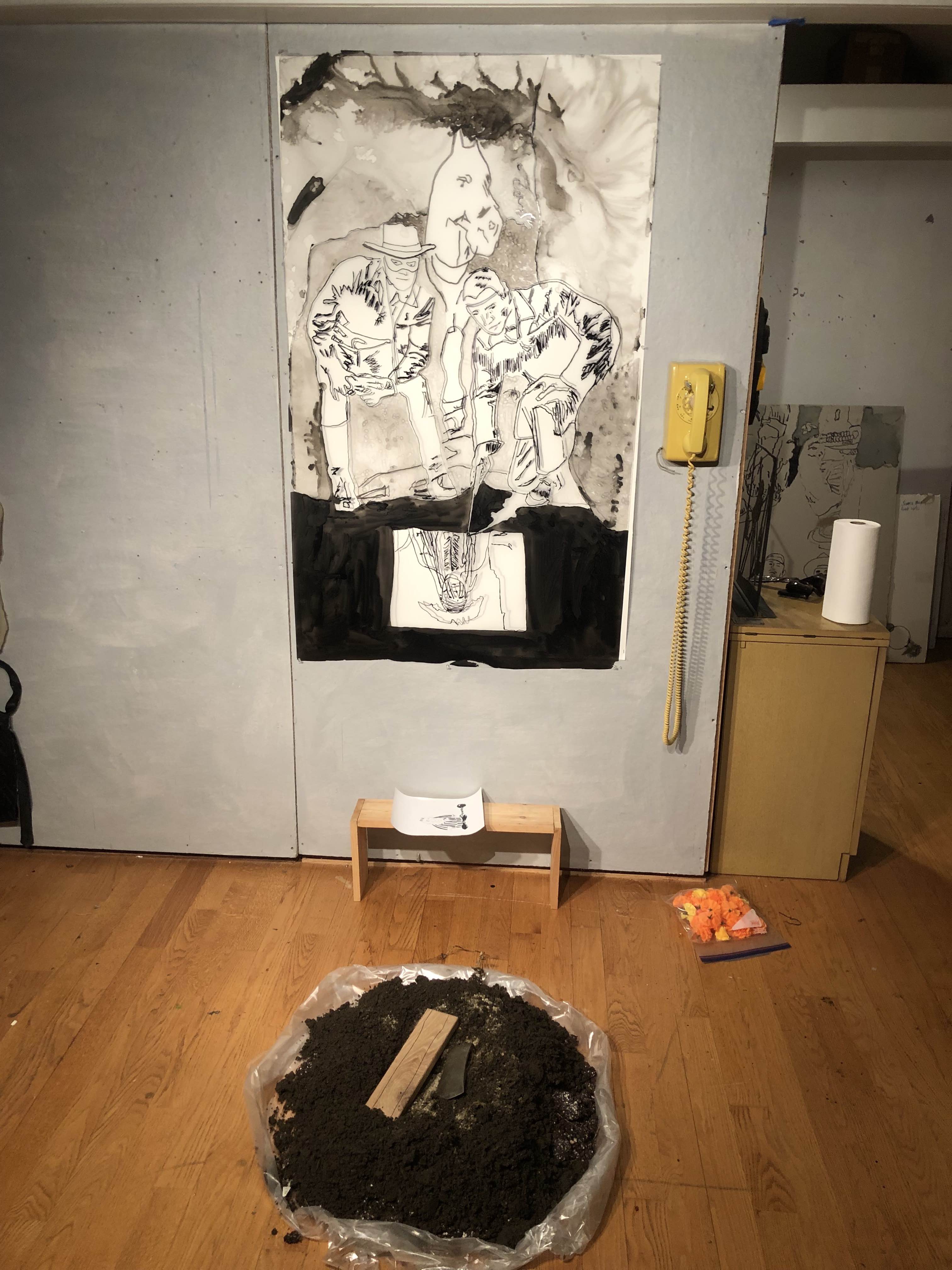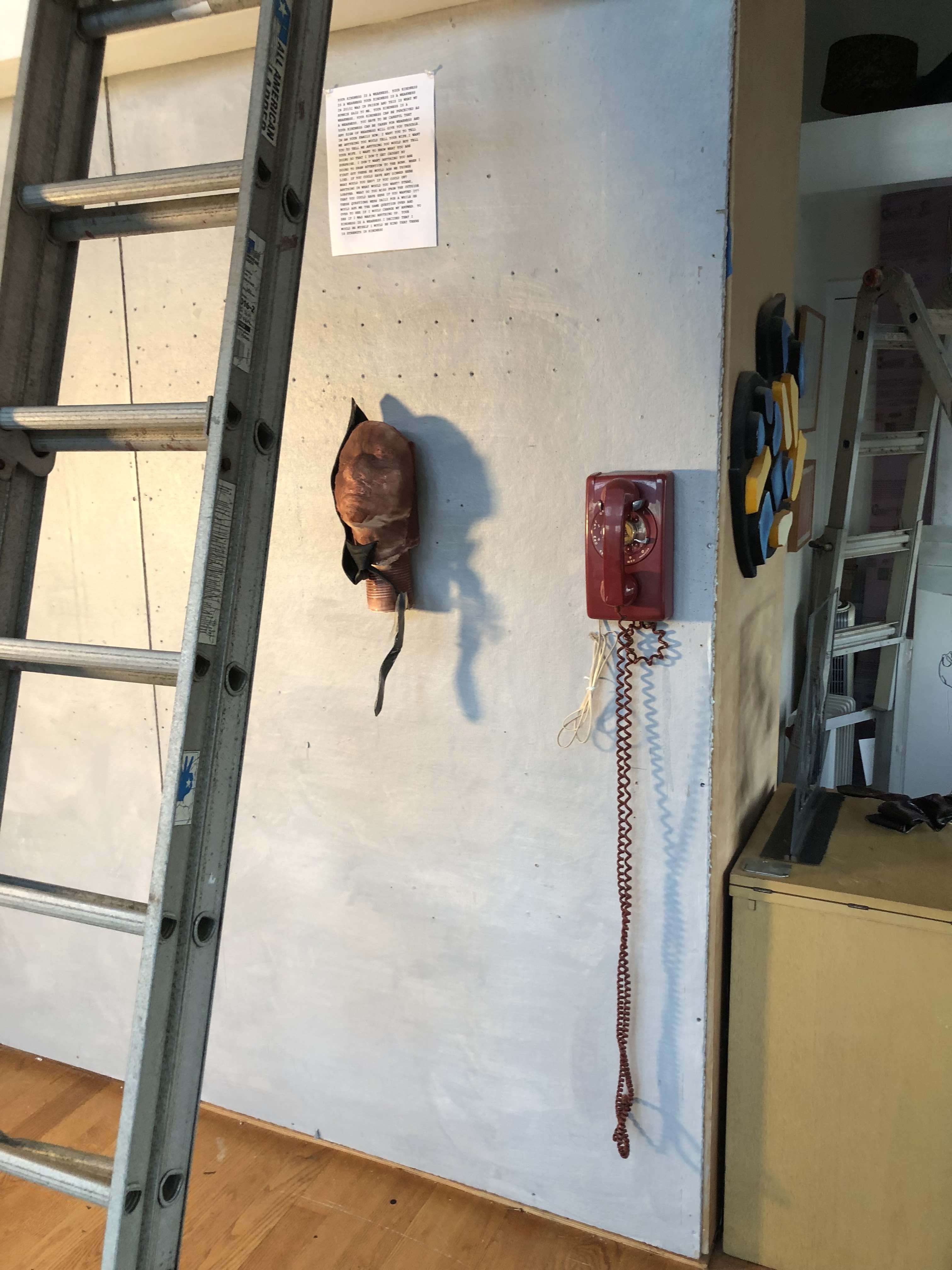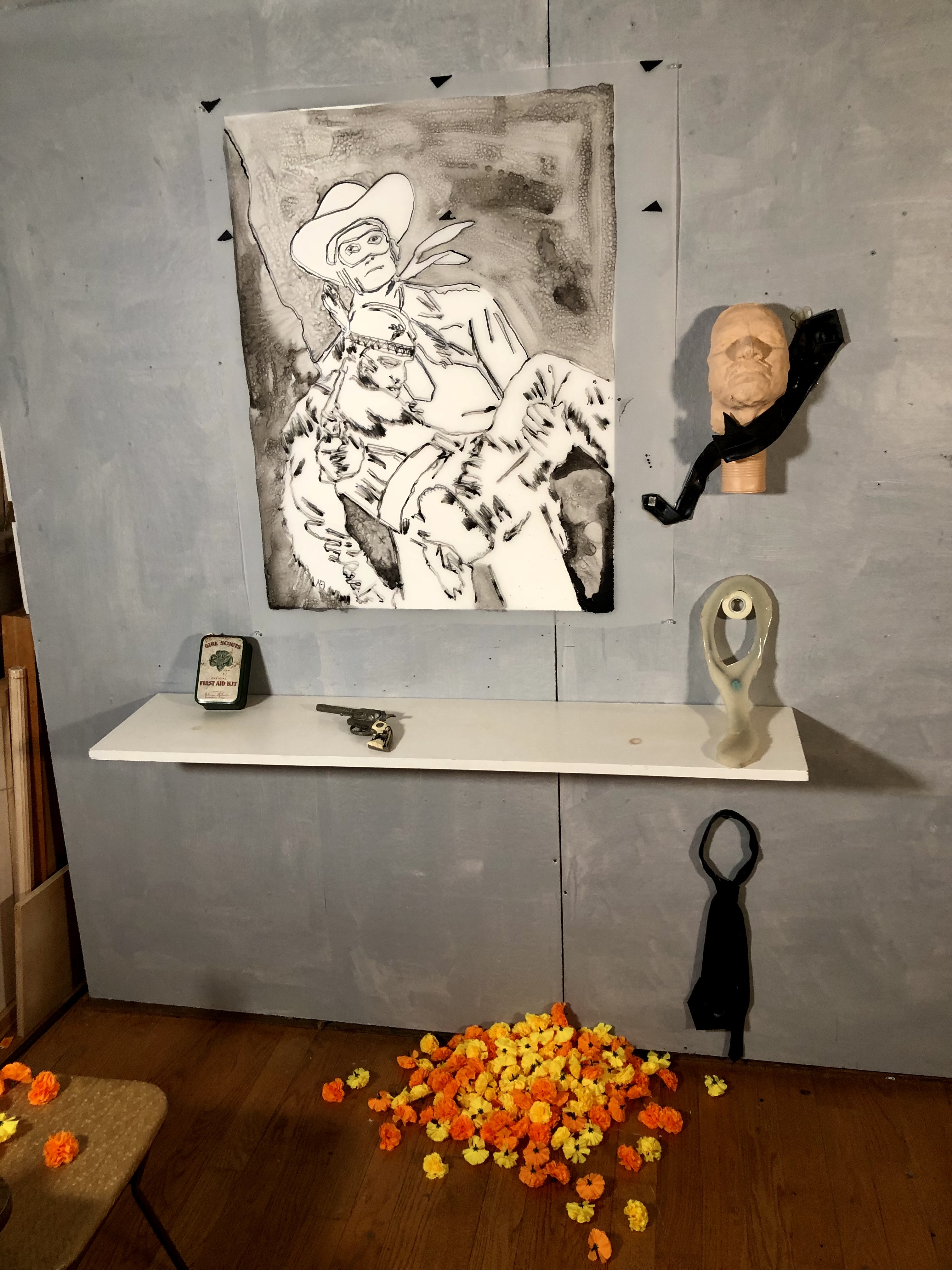@jamesmeyerart
jamesmeyerart.com
James
James Meyer uses his background of being from three different cultures (Guachichile, Spanish, and White American) to develop art works that address cultural perception, implicit bias, and the human struggle. Creating large scale installations that include his knowledge of fabrication and science, he ties contemporary ideas of anthropology and psychology into works he calls conceptual imagery. These works have a shared underpinning of drawing and the freshness of line as a component. Currently Meyer has created monologues that are played when a rotary phone in an installation rings. Giving back is part of his artistic practice. Before going to prison, he founded ArtGarage, an open studio for high school students, helping them realize the potential in their artworks. After going to prison, he understood the importance and empowerment making art can bring to someone incarcerated. While in prison, Meyer taught drawing classes and continues to teach drawing in the Maine State Prison. Working with MPAC (Maine Prison Arts Coalition) and Escaping Time2, Meyer continues to help the people he left behind project their voice. He also works with the John Jay College initiative helping formerly incarcerated people go to college. In 2021, along with two other artist fabricators, Meyer gave a lecture about working for other artists, what to expect, and the power dynamics in those relationships. In 2022, he made three large sculptures for the city of Lewiston, Maine for their new park. During the pandemic, outdoor sculpture became one way that people could continue to experience artwork. Meyer also feels it appeals to an audience that would not go to conventional galleries.
1+1=1: James Meyer defines the roots of his conceptual imagery by creating a grand unified theory linking communication theory, memory science, and lateral thinking, bringing together patterns in their usage, which is repeated in his conceptual imagery. In this thesis, Meyer highlights the origins of conceptual art. In the 1970s, conceptual art was described as “an idea about an idea,” describing contemporary understandings of the use of conceptual art as a medium. Meyer brings conceptual art into the present using cultural perspective and trauma links through artists such as Hugh Hayden, Louise Bourgeois, and Robert Gober. Meyer also demonstrates that even in the origins of conceptual art, such as in Duchamp's Readymades, an aesthetic of beauty was used. Meyer rounds back on cultural layering with ideas of implicit bias by implementing the complex nature of his background as a North American Indian, Hispanic, and European immigrant, aware that the American ideal of the melting pot of cultures has become more of an idea to repent in recent years.
jamesmeyerart.com
James
Meyer
James Meyer uses his background of being from three different cultures (Guachichile, Spanish, and White American) to develop art works that address cultural perception, implicit bias, and the human struggle. Creating large scale installations that include his knowledge of fabrication and science, he ties contemporary ideas of anthropology and psychology into works he calls conceptual imagery. These works have a shared underpinning of drawing and the freshness of line as a component. Currently Meyer has created monologues that are played when a rotary phone in an installation rings. Giving back is part of his artistic practice. Before going to prison, he founded ArtGarage, an open studio for high school students, helping them realize the potential in their artworks. After going to prison, he understood the importance and empowerment making art can bring to someone incarcerated. While in prison, Meyer taught drawing classes and continues to teach drawing in the Maine State Prison. Working with MPAC (Maine Prison Arts Coalition) and Escaping Time2, Meyer continues to help the people he left behind project their voice. He also works with the John Jay College initiative helping formerly incarcerated people go to college. In 2021, along with two other artist fabricators, Meyer gave a lecture about working for other artists, what to expect, and the power dynamics in those relationships. In 2022, he made three large sculptures for the city of Lewiston, Maine for their new park. During the pandemic, outdoor sculpture became one way that people could continue to experience artwork. Meyer also feels it appeals to an audience that would not go to conventional galleries.
1+1=1: James Meyer defines the roots of his conceptual imagery by creating a grand unified theory linking communication theory, memory science, and lateral thinking, bringing together patterns in their usage, which is repeated in his conceptual imagery. In this thesis, Meyer highlights the origins of conceptual art. In the 1970s, conceptual art was described as “an idea about an idea,” describing contemporary understandings of the use of conceptual art as a medium. Meyer brings conceptual art into the present using cultural perspective and trauma links through artists such as Hugh Hayden, Louise Bourgeois, and Robert Gober. Meyer also demonstrates that even in the origins of conceptual art, such as in Duchamp's Readymades, an aesthetic of beauty was used. Meyer rounds back on cultural layering with ideas of implicit bias by implementing the complex nature of his background as a North American Indian, Hispanic, and European immigrant, aware that the American ideal of the melting pot of cultures has become more of an idea to repent in recent years.





